If your state allows deer baiting, you can worry about how to bait deer effectively although some would be reluctant to call that “hunting.” Then again, if you hunt in an area with high hunting pressure, you may not see any deer if you don’t bait because other hunters around you probably are on it.
Keeping all debates aside, we will talk about the best way to bait deer so you can harvest more trophy bucks this season.
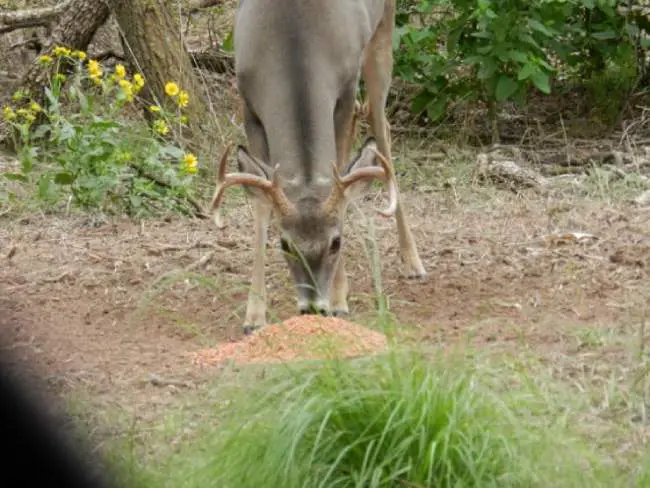
How to Bait Deer?
Things you need
- Grain feeder
- Deer urine
- Monitoring equipment and cameras
Pick the right location
Your feeding area’s effectiveness can be affected by a number of factors, including:
- The traffic: If you know deer travel frequently, a route with high traffic is an excellent place to place your feeder.
- The seclusion: Feeders should be placed near cover so deer can access them during daylight hours.
Use grain feeders
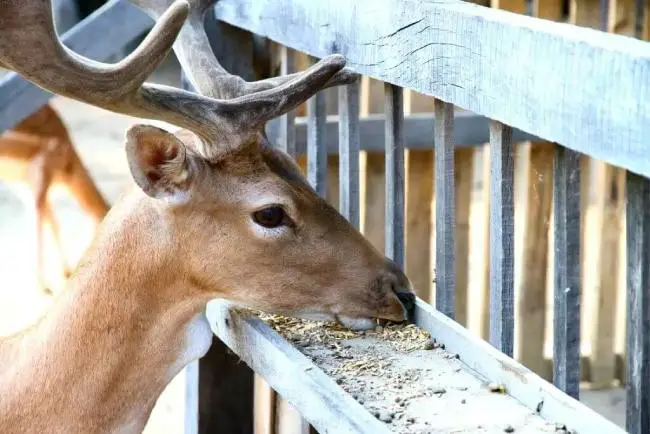
Self-grain feeders allow deer to eat pellets when they are hungry. Due to their frequent eating habits, these types of feeders when trying to learn how to bait a deer.
Use food plots
Feeding is usually bigger than the average hunting plot, and their primary purpose is to allow deer to feed and feel protected. It is important to hunt feeding plots sparingly so these wary animals feel safe using them.
Use lures such as deer urine
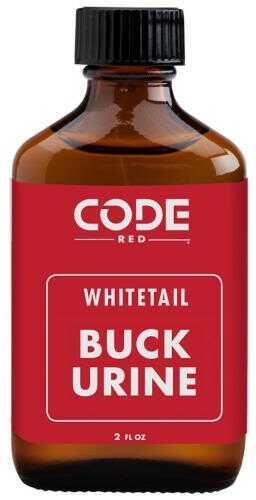
Deer can be lured using a variety of methods, including pheromones, food, and urine. Deer urine scents are a great way to attract large bucks to your property. As soon as they detect another deer’s scent, they will want to find out who else is nearby.
You can purchase deer urine to maximize the effectiveness of urine by spreading it over a large area.
Avoid bait in a pile
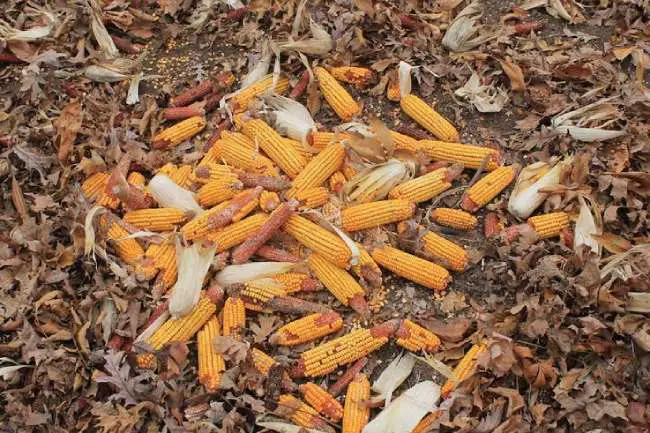
Bait piles are rarely successful and are sometimes even counterproductive, especially if you’re targeting mature bucks. They may occasionally work in some places where deer are not spooked out or over-pressured easily. I have found that a larger spread of bait is more effective.
Refill in the rain
During rainy weather, you should refill your feeder. It is less likely that you will bump into deer and other animals while you are baiting, but the wind and rain will also prevent your scent from spreading too far
Use monitoring equipment and cameras
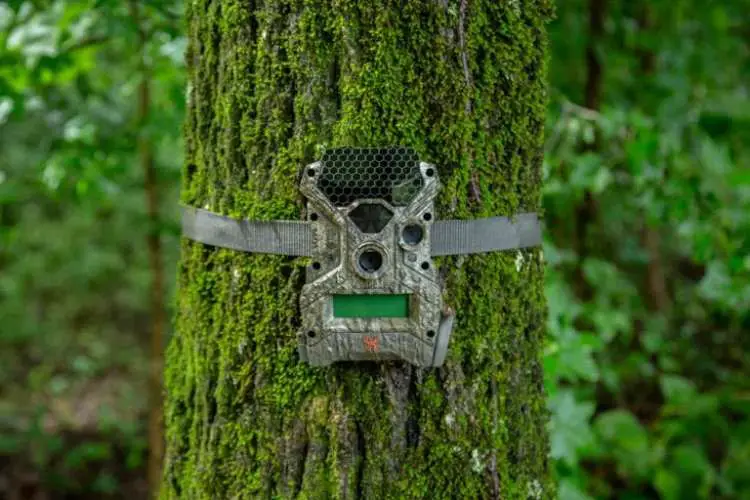
To make the most out of your time in the woods, you’ll want to monitor how many animals and the species frequent your bait spot. You can use monitoring equipment to track surveys or you can install a cellular camera that can send you real-time pictures.
Hunt the trails
As a means of killing mature animals through bait sites, such as mature buck deer, follow the trails they use to enter and leave the feeder.
Unless you’re in a food-scarce area, most mature bucks won’t attack your bait directly. Move away from the bait site a couple of hundred yards away and set up an area leading directly to the bait site.
Other Things You Can Use to Bait Deer
Vegetables
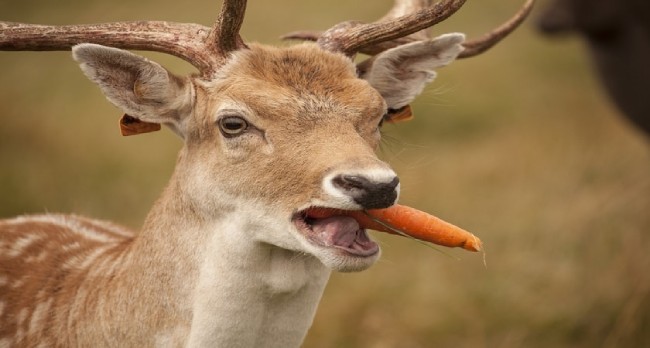
Some vegetables are as good as fruits. Vegetables that may serve as good attractants are cabbage and carrots. Fruits are more expensive, so vegetables are a good cheaper alternative.
Sugar beets
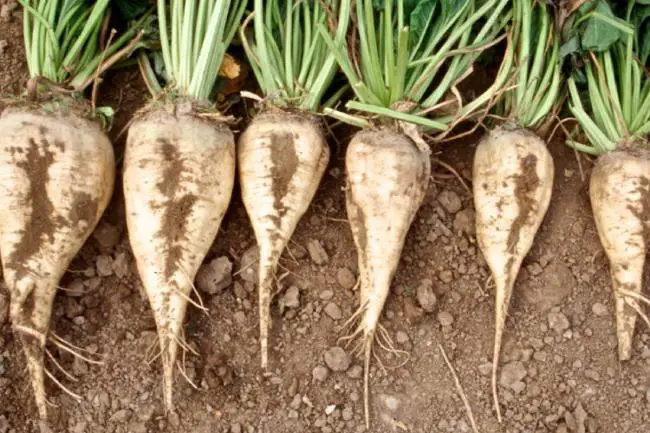
Sugary and sweet fruits are attractive to most animals, including deer. Sugar beets are used similarly to apples when baiting deer. This means you can either spread them out or use a container for baiting.
Peanut butter
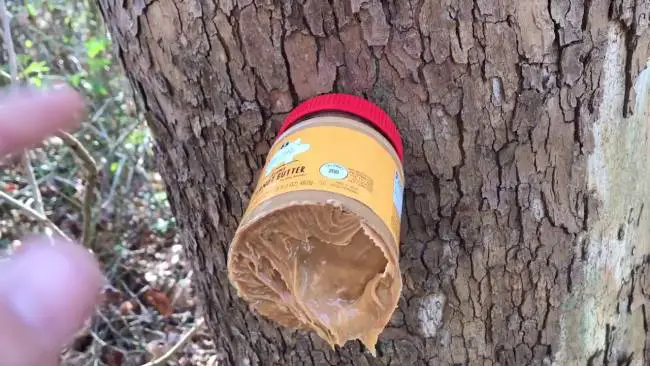
The nutrient-rich peanut butter is a favorite among deer but it’s not readily available in the forest. This is perhaps the reason peanut butter seems so appealing to these animals.
Shelled corn
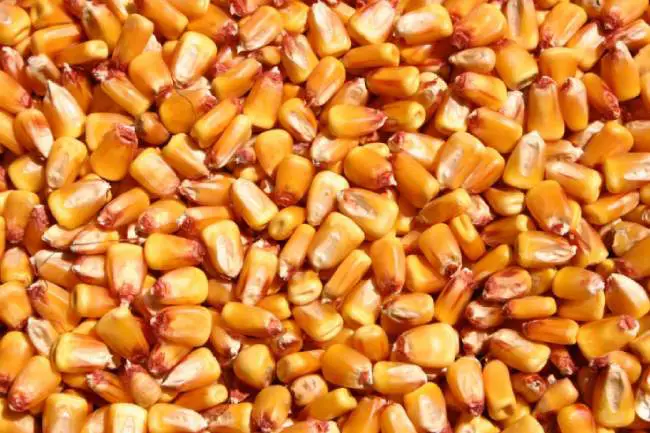
Corn is highly effective as a deer attractant for a number of reasons. Deer love whole-grain corn because it is tasty and packed with nutritional value. You can take down a much bigger buck if you use piles of corn as an attractant.
Apples
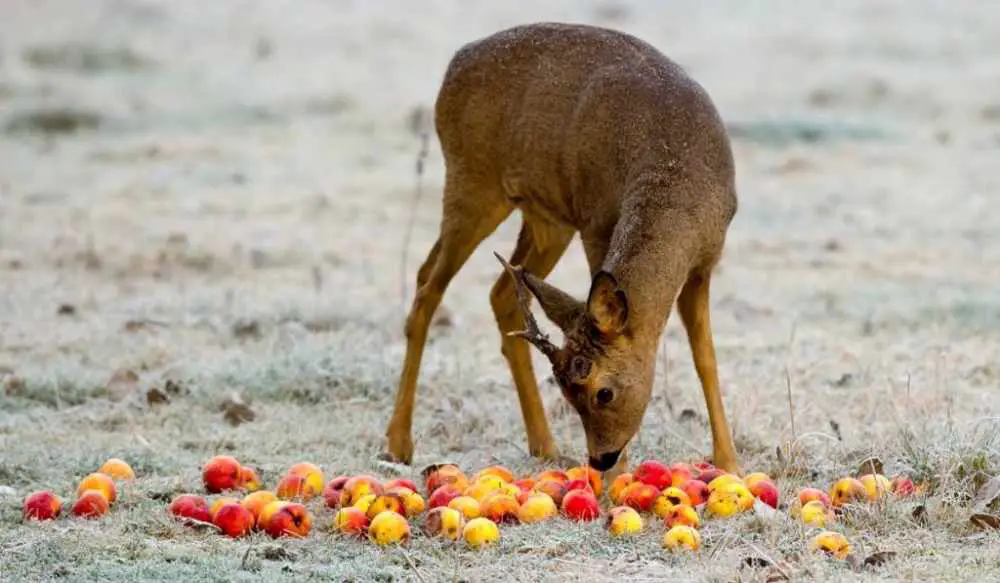
Herbivores in the forest, like deer, enjoy eating fruits. Fruits are great for deer baiting since they attract deer. The most commonly used fruits are apples that can be cut up or placed whole. Apples are a favorite food of deer, especially white-tailed deer.
Salt and mineral salt
When used as deer bait, salt works wonders. Unfortunately, deer cannot readily access salt in the forest due to its lack of availability. Minerals and nutrients found in salt are essential to all living things, including human beings and deer. The use of salt will ensure a healthy population of deer if you’re into wildlife conservation.
Acorns
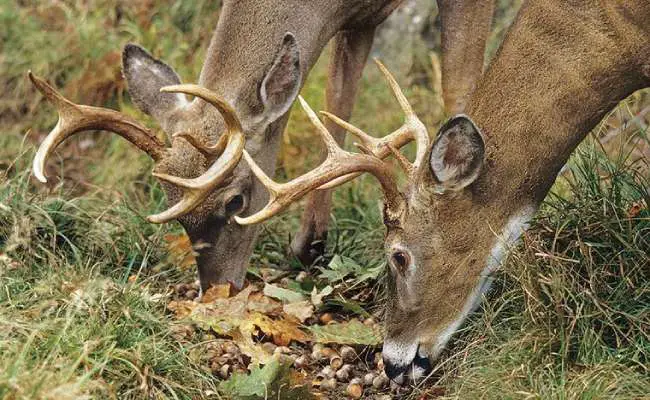
Deer also prefer acorns that are low in tannic acid. You should use ripe, mild-flavored acorns. Deer, especially white-tailed deer, love apples and can’t get enough of them.
Soybeans

Deer love soybeans because they are an excellent attractant, especially during the deer hunting season. Although deer enjoy eating soybeans, their preference is for toasted soybeans, which are more aromatic due to their roasting and toasting.
Tips to bait deer
Keep feeding as many ambush sites as possible The most important thing is to feed as many ambush areas as you can to encourage deer to become established in areas where we don’t hunt regularly. That way, when we do hit it, it is in surprise.
Don’t use corn in winter. Deer are able to absorb more nutrients during winter due to their slower digestion. However, they may have difficulty absorbing other foods after eating corn because it upsets their digestive system. The deer may then become dehydrated and die.
FAQs
1. How long does it take deer to find bait?
Ans. This actually depends on many factors, including the availability of natural food sources, the proximity of the bait to their habitat, the population density of deer in the area, and the overall attractiveness of the bait. If you place your bait in a private or public land where deer are known to frequent, it may attract them within a matter of hours or even minutes. But if the bait is less appealing or there are abundant natural food sources available, it may take them longer to discover the bait or show interest in it.
2. How to bait deer with corn?
Ans. Here’s the best way to bait deer with corn:
a) Find a suitable location: Look for areas where deer are likely to frequent, such as near their bedding areas, along game trails, or close to a water source.
b) Prepare the bait site: Clear the area of any debris or vegetation and create a small clearing where you can place the corn.
c) Spread the corn: Scatter the corn on the ground in the cleared area. Start with a small amount and gradually increase the quantity over time.
d) Use corn feeders: You can also use corn feeders specifically designed for attracting deer. Fill the deer feeder with corn and hang or place it in the desired location.
e) Maintain the bait site: Regularly check the site and replenish the corn as needed. Keep in mind any regulations or restrictions regarding baiting in your area.
f) Patience and observation: Give deer time to discover the corn and become comfortable with your bait site. Keep an eye on the area from a distance to avoid disturbing the animals, and be patient because they may take some time to become accustomed to the bait.
3. Are there any potential drawbacks or concerns with deer baiting?
Ans. One of the drawbacks of deer baiting is the high concentration of deer in a specific area, which can increase the risk of disease transmission among these animals. There can also be disruption of natural deer movement patterns. Also, overreliance on baiting can cause deer to associate humans with food, leading to negative interactions outside of hunting situations.









Leave a Comment